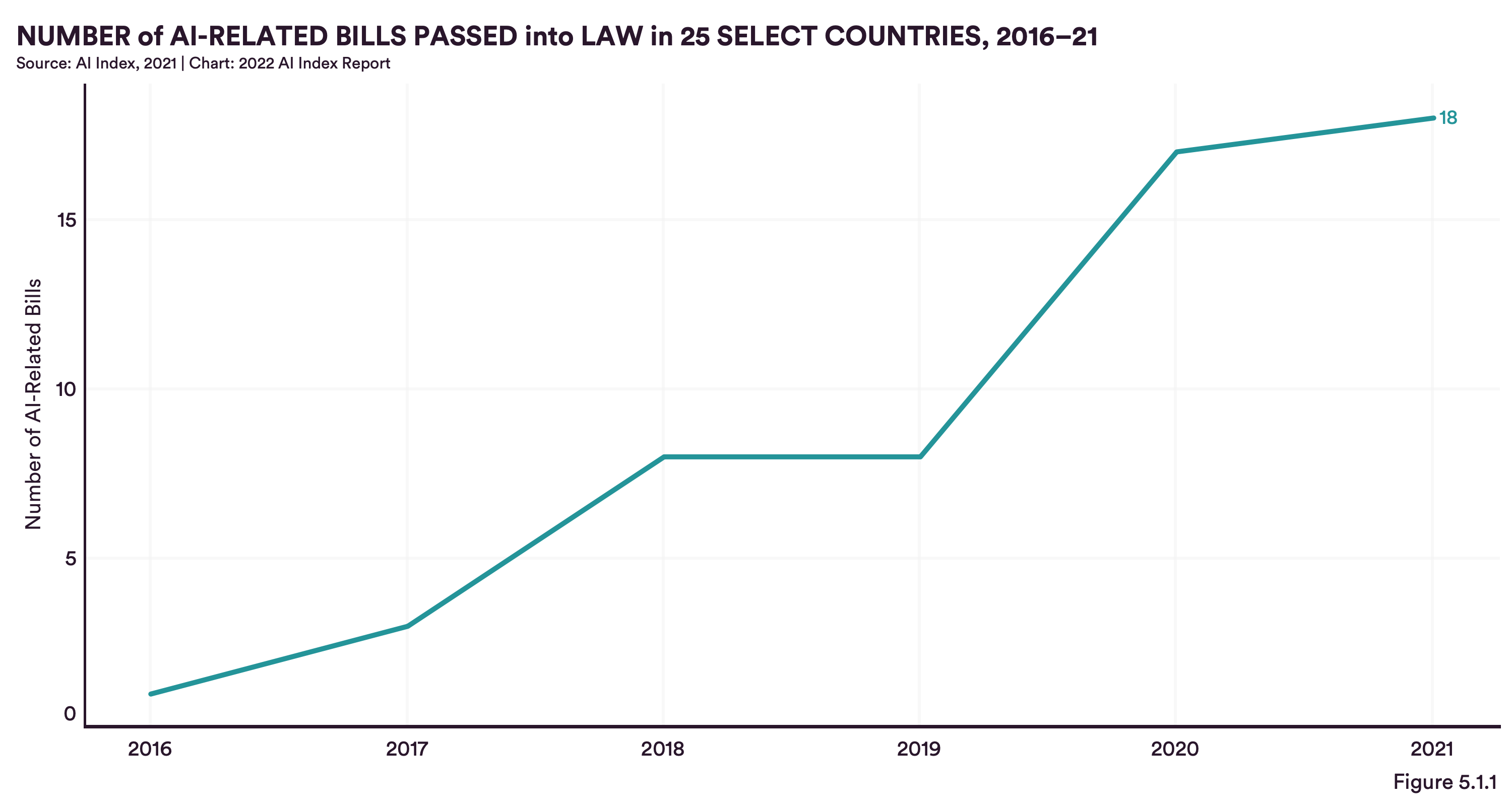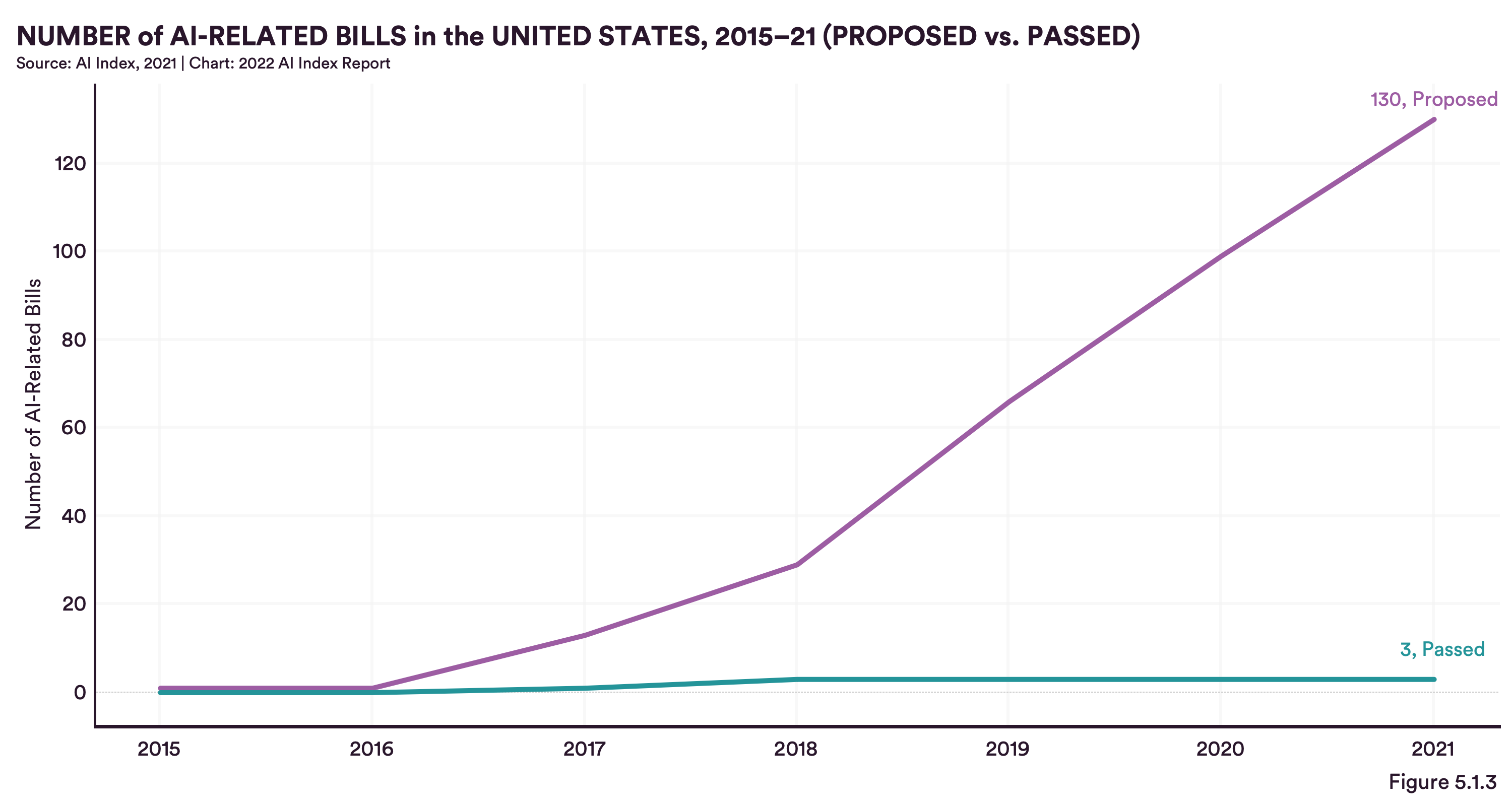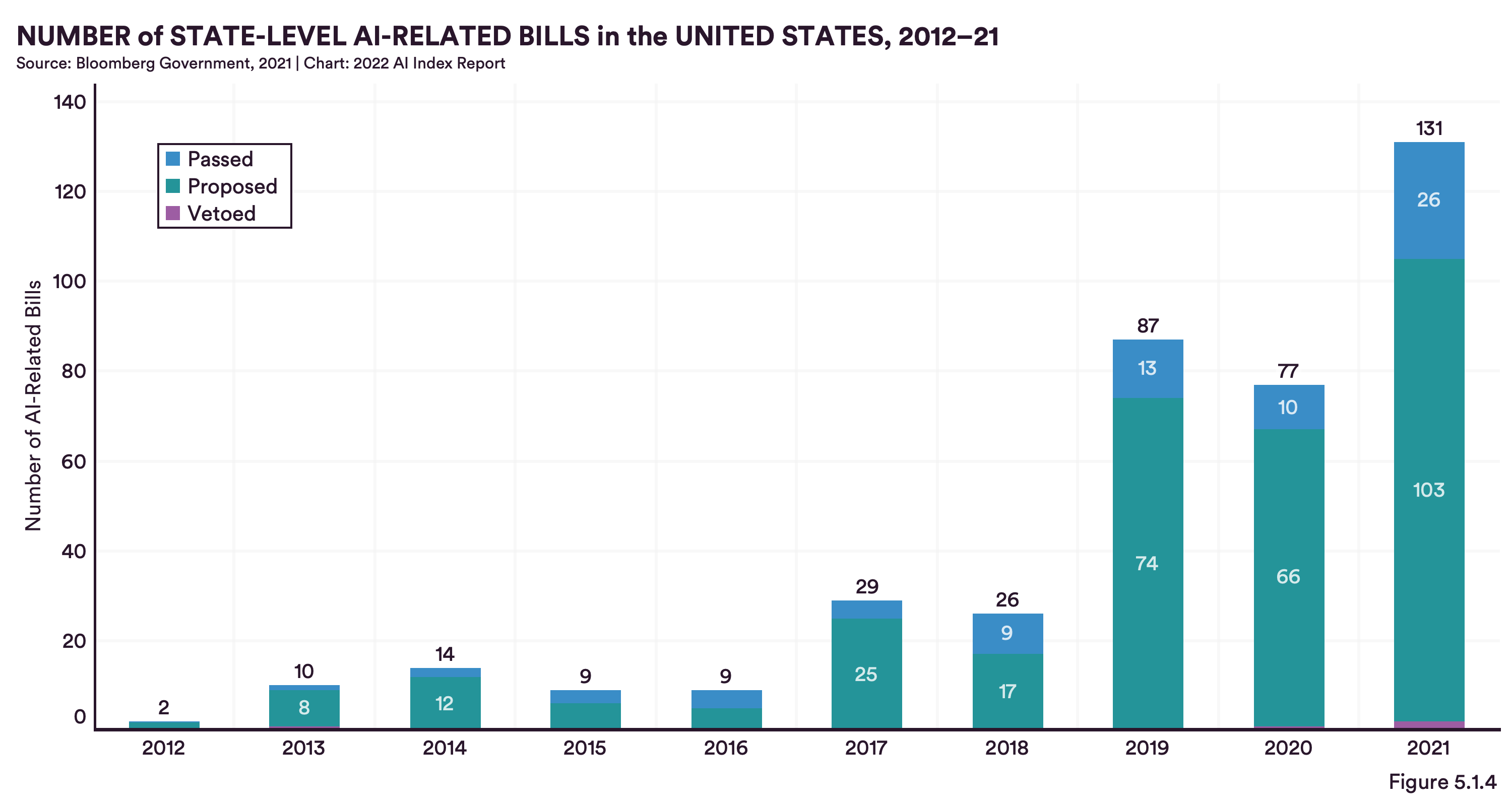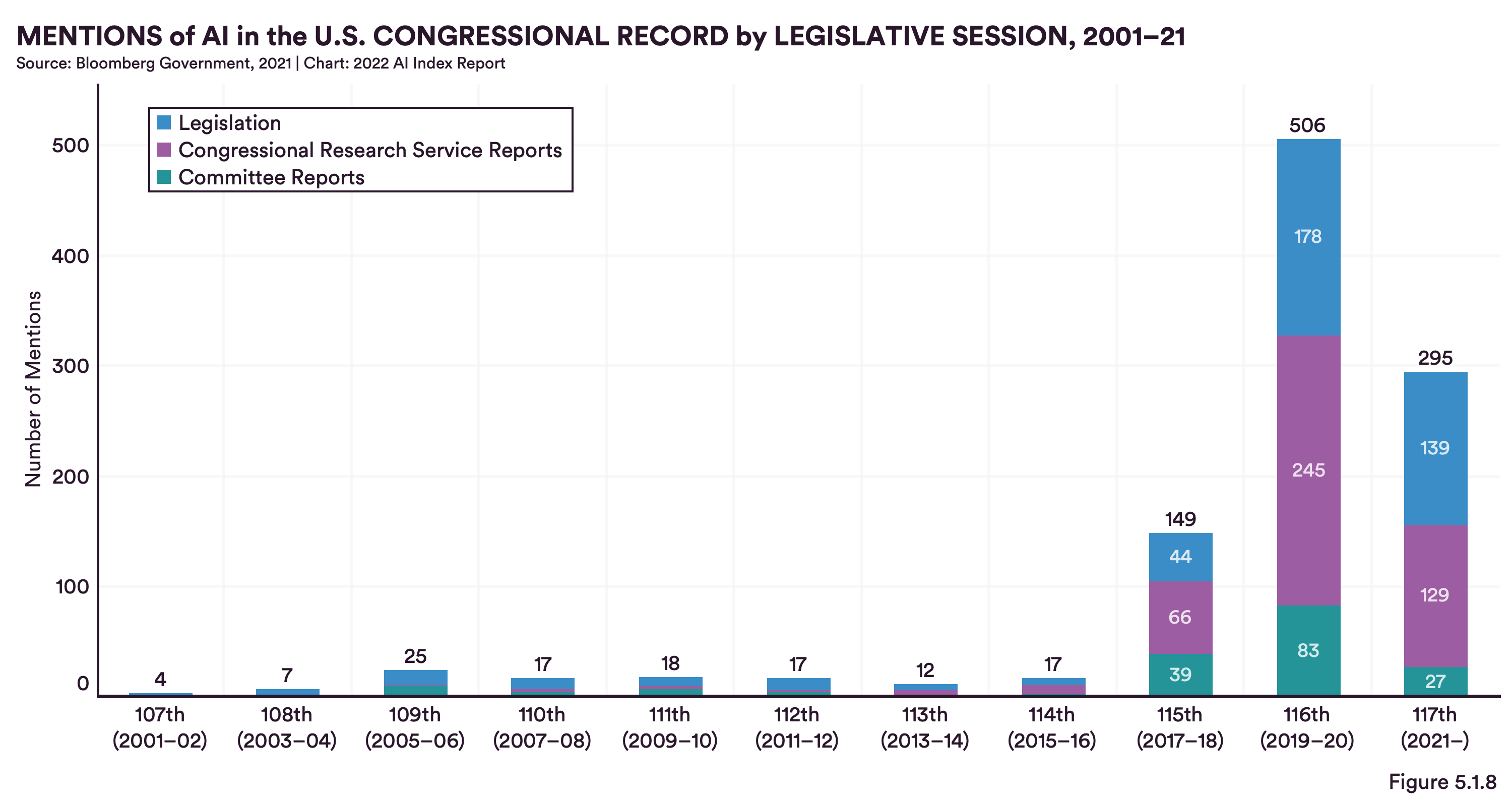Welcome to the
2022 AI Index Report
The AI Index is an independent initiative at the Stanford Institute for Human-Centered Artificial Intelligence (HAI), led by the AI Index Steering Committee, an interdisciplinary group of experts from across academia and industry. The annual report tracks, collates, distills, and visualizes data relating to artificial intelligence, enabling decision-makers to take meaningful action to advance AI responsibly and ethically with humans in mind.
The latest edition includes data from a broad set of academic, private, and nonprofit organizations as well as more self-collected data and original analysis than any previous editions, including an expanded technical performance chapter, a new survey of robotics researchers around the world, data on global AI legislation records in 25 countries, and a new chapter with an in-depth analysis of technical AI ethics metrics.
The private investment in AI in 2021 totaled around $93.5 billion—more than double the total private investment in 2020, while the number of newly funded AI companies continues to drop, from 1051 companies in 2019 and 762 companies in 2020 to 746 companies in 2021. In 2020, there were 4 funding rounds worth $500 million or more; in 2021, there were 15.
Despite rising geopolitical tensions, the United States and China had the greatest number of cross-country collaborations in AI publications from 2010 to 2021, increasing five times since 2010. The collaboration between the two countries produced 2.7 times more publications than between the United Kingdom and China—the second highest on the list.
Large language models are setting new records on technical benchmarks, but new data shows that larger models are also more capable of reflecting biases from their training data. A 280 billion parameter model developed in 2021 shows a 29% increase in elicited toxicity over a 117 million parameter model considered the state of the art as of 2018. The systems are growing significantly more capable over time, though as they increase in capabilities, so does the potential severity of their biases.
Research on fairness and transparency in AI has exploded since 2014, with a fivefold increase in related publications at ethics-related conferences. Algorithmic fairness and bias has shifted from being primarily an academic pursuit to becoming firmly embedded as a mainstream research topic with wide-ranging implications. Researchers with industry affiliations contributed 71% more publications year over year at ethics-focused conferences in recent years.
Since 2018, the cost to train an image classification system has decreased by 63.6%, while training times have improved by 94.4%. The trend of lower training cost but faster training time appears across other MLPerf task categories such as recommendation, object detection and language processing, and favors the more widespread commercial adoption of AI technologies.
Top results across technical benchmarks have increasingly relied on the use of extra training data to set new state-of-the-art results. As of 2021, 9 state-of-the-art AI systems out of the 10 benchmarks in this report are trained with extra data. This trend implicitly favors private sector actors with access to vast datasets.
An AI Index analysis of legislative records on AI in 25 countries shows that the number of bills containing “artificial intelligence” that were passed into law grew from just 1 in 2016 to 18 in 2021. Spain, the United Kingdom, and the United States passed the highest number of AI-related bills in 2021 with each adopting three.
An AI Index survey shows that the median price of robotic arms has decreased by 46.2% in the past five years—from $42,000 per arm in 2017 to $22,600 in 2021. Robotics research has become more accessible and affordable.
Research and development is an integral force that drives the rapid progress of AI. Every year, a wide range of academic, industry, government, and civil society experts and organizations contribute to AI R&D via a slew of papers, journal articles, and other AI-related publications, conferences on AI or on particular subtopics like image recognition or natural language processing, international collaboration across borders, and the development of open-source software libraries. These R&D efforts are diverse in focus and geographically dispersed. This first chapter draws on multiple datasets to analyze key trends in the AI research and development space in 2021.

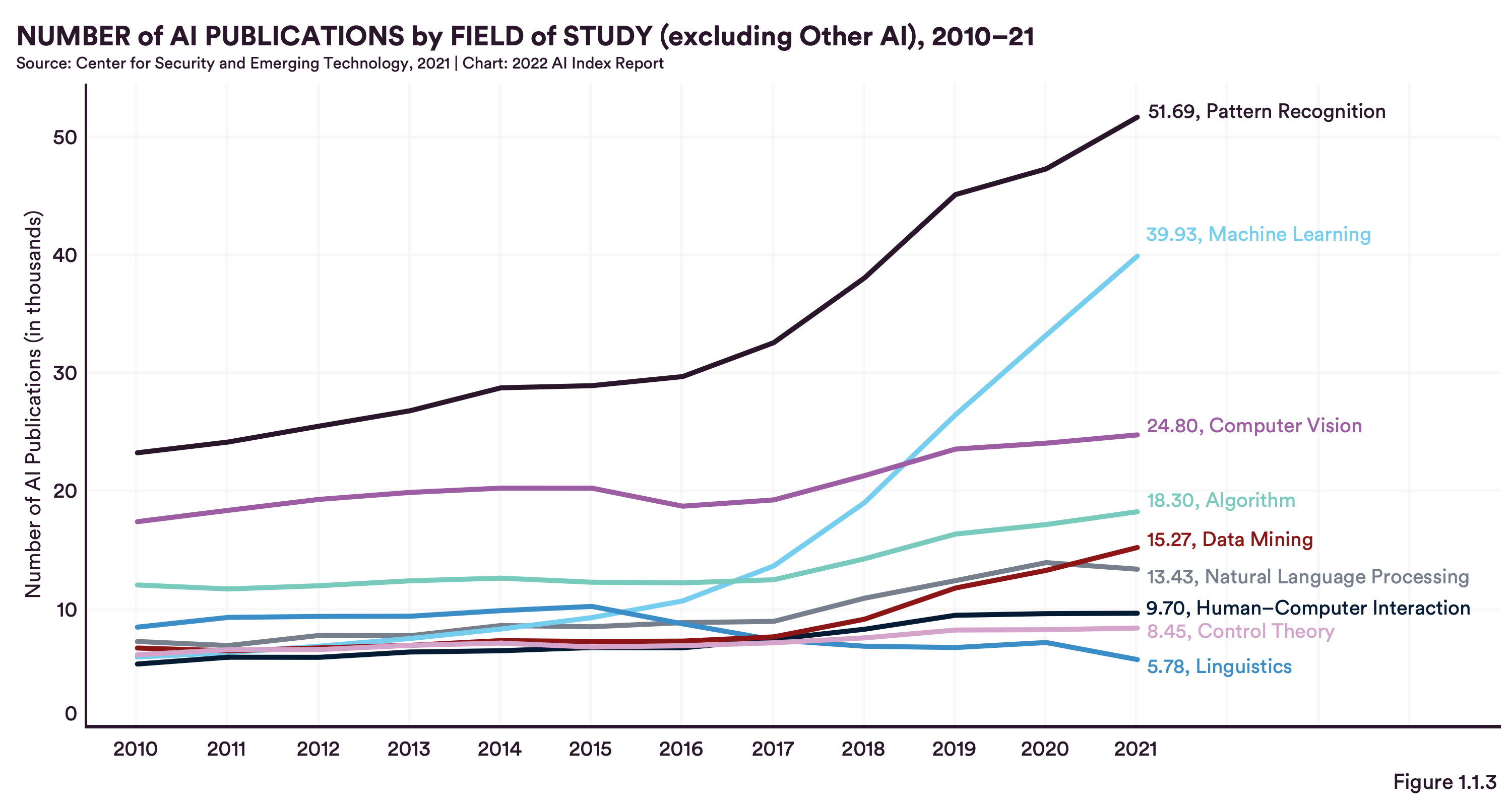
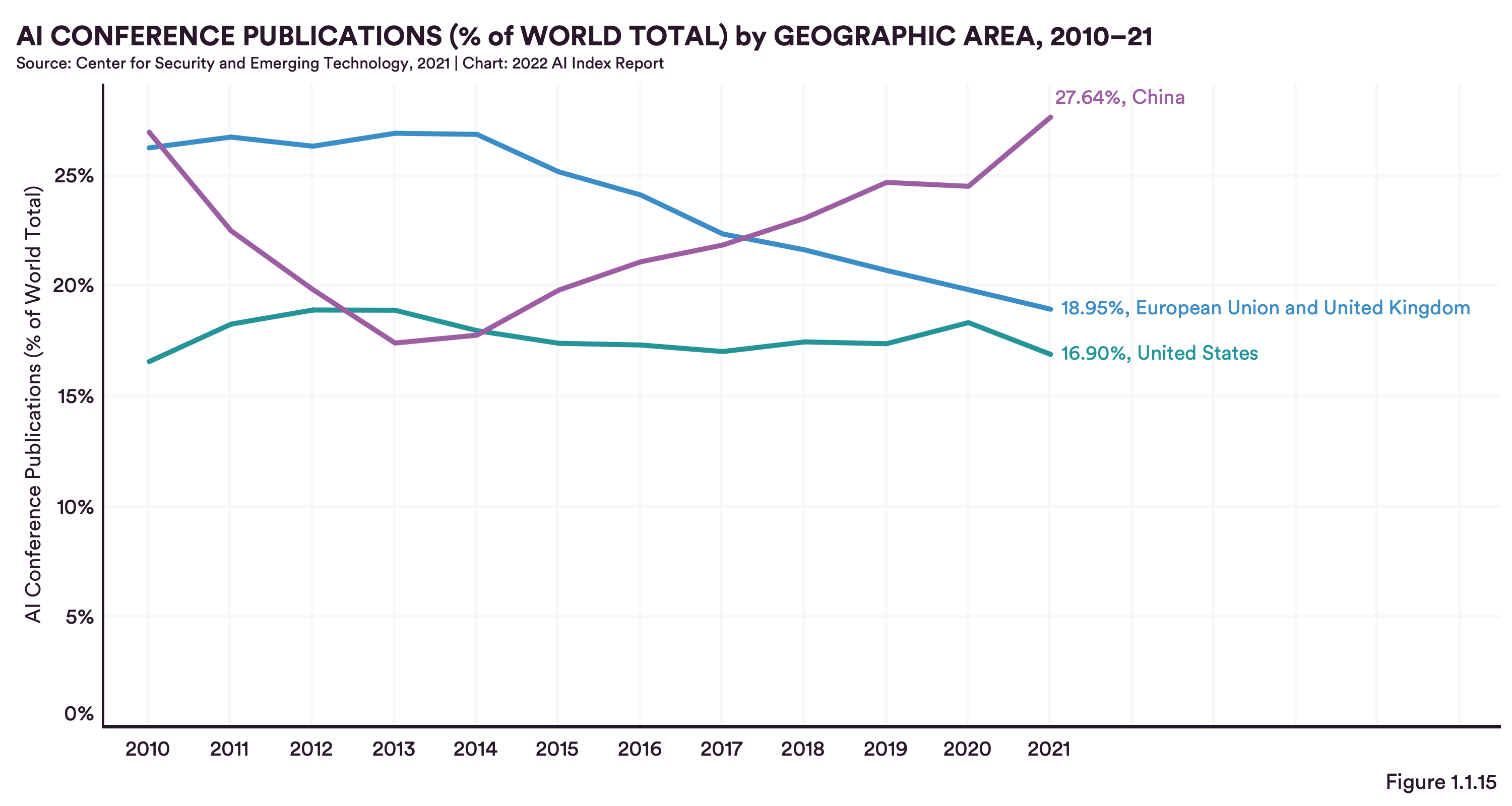

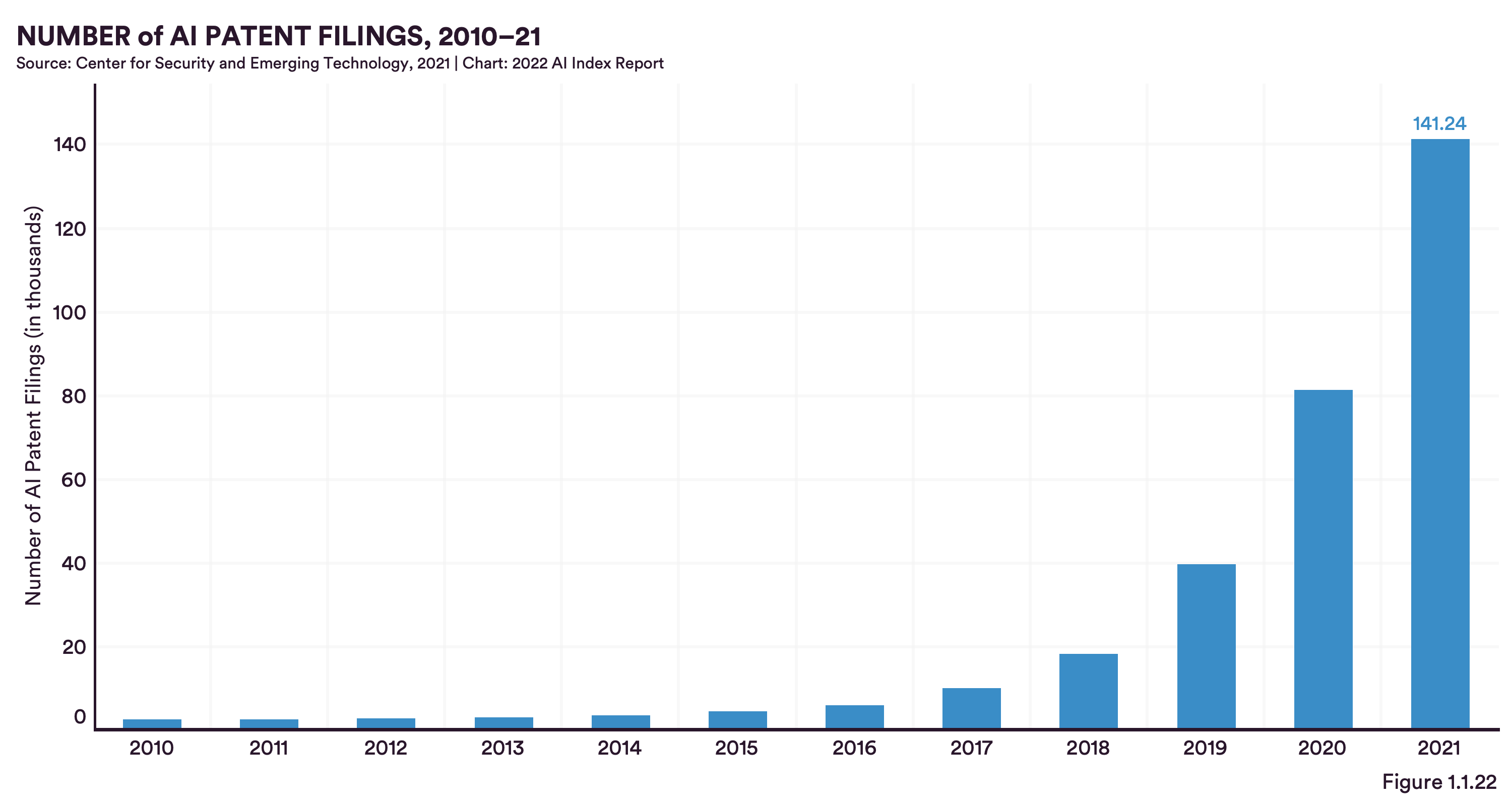

This year, the technical performance chapter includes more analysis than ever before of the technical progress in various subfields of artificial intelligence, including trends in computer vision, language, speech, recommendation, reinforcement learning, hardware, and robotics. It uses a number of quantitative measurements, from common AI benchmarks and prize challenges to a field-wide survey, to highlight the development of top-performing AI systems.
In recent years, AI systems have started to be deployed into the world, and researchers and practitioners are reckoning with their real-world harms. Some of these harms include commercial facial recognition systems that discriminate based on race, résumé screening systems that discriminate on gender, and AI-powered clinical health tools that are biased along socioeconomic and racial lines. This year, the AI Index highlights metrics which have been adopted by the community for reporting progress in eliminating bias and promoting fairness. Tracking performance on these metrics alongside technical capabilities provides a more comprehensive perspective on how fairness and bias change as systems improve, which will be important to understand as systems are increasingly deployed.

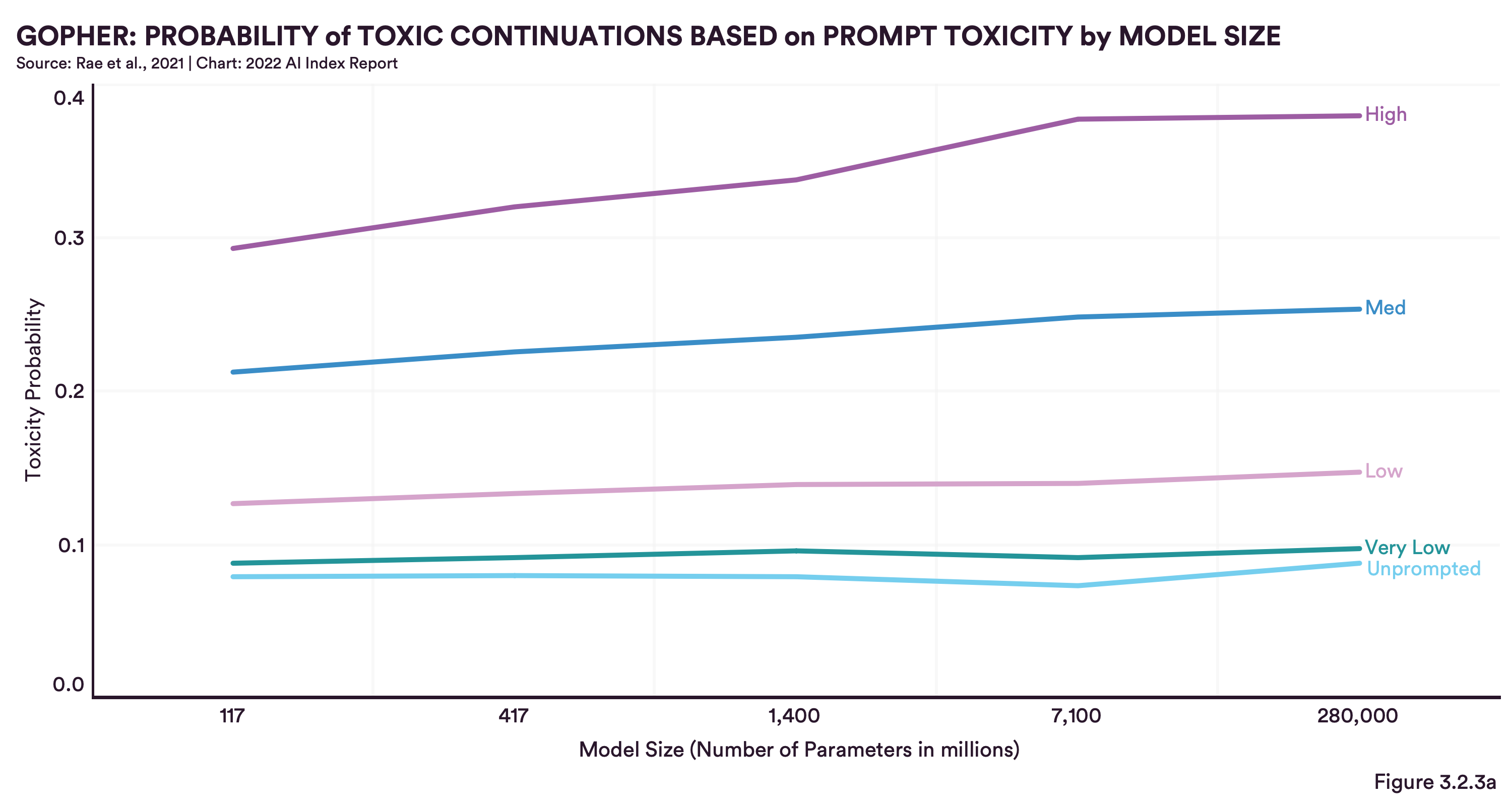
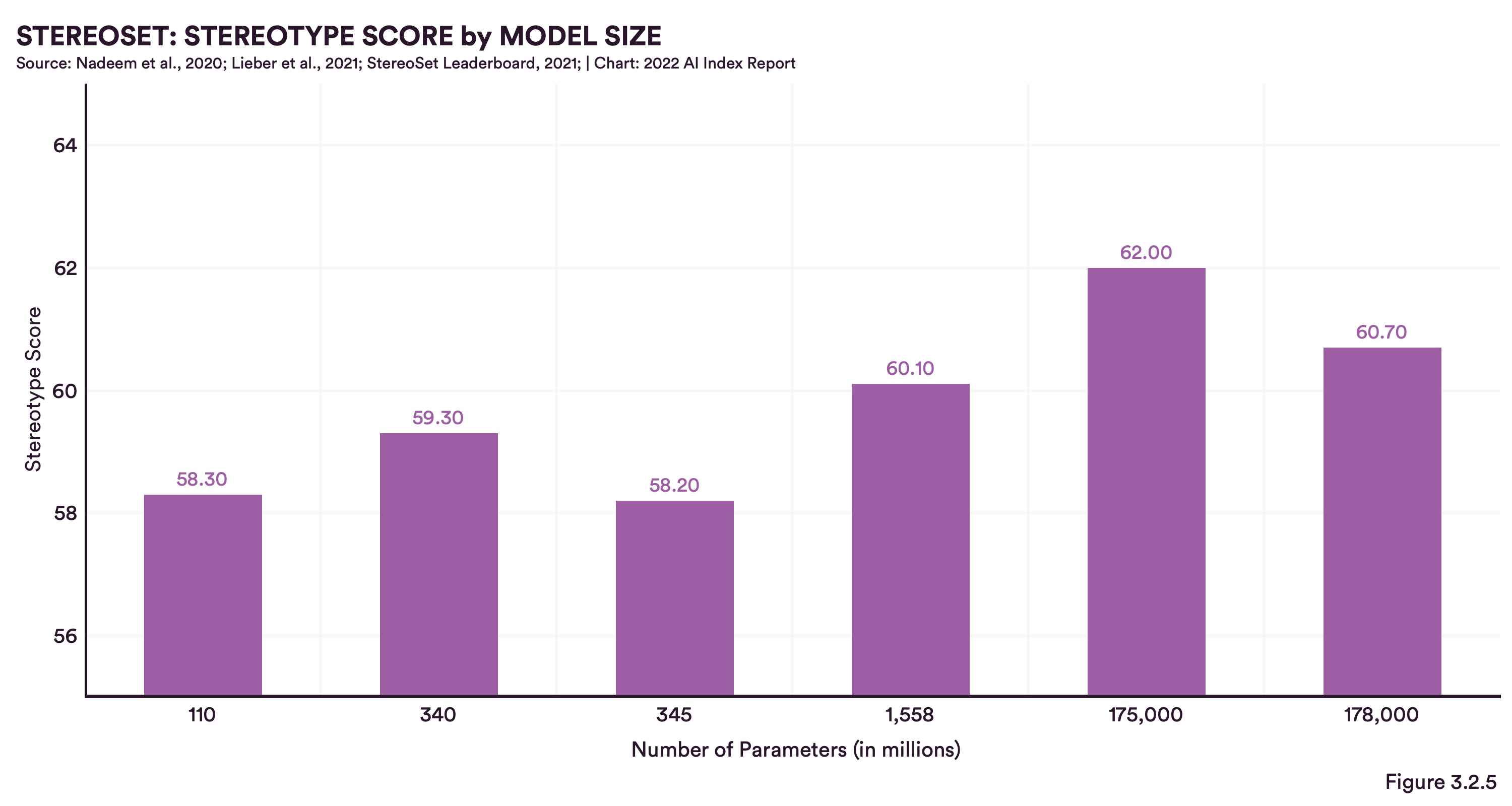
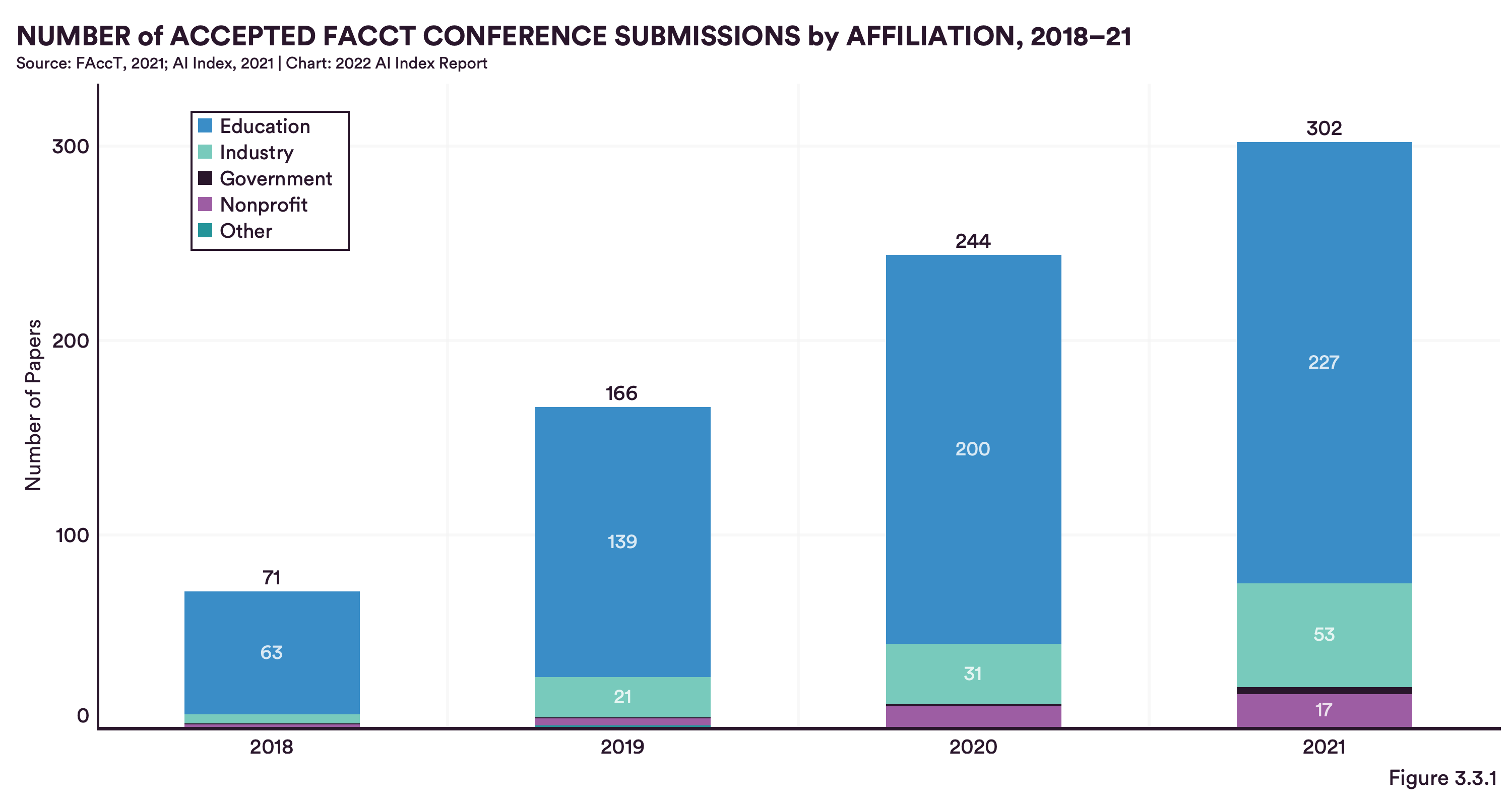
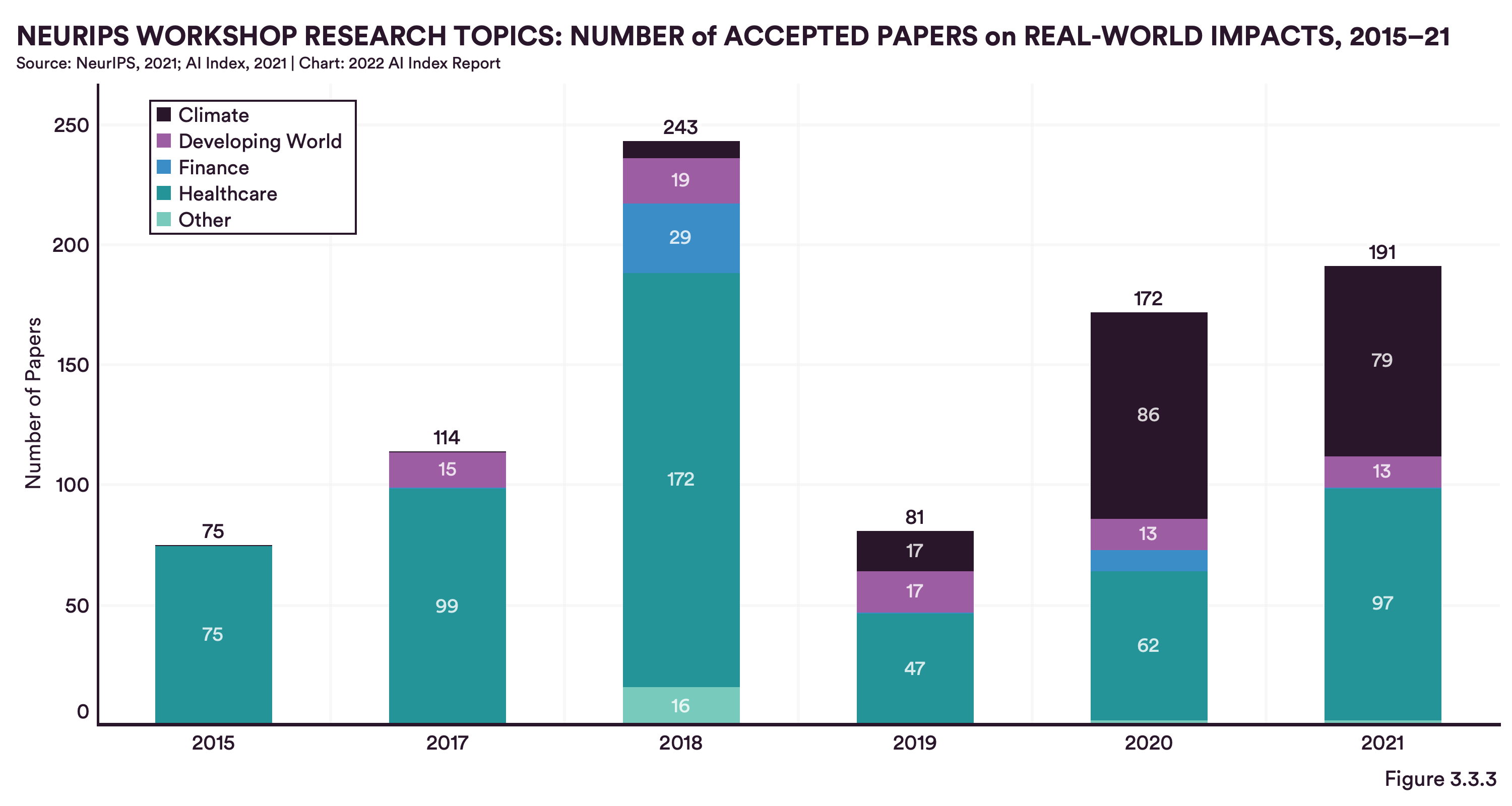
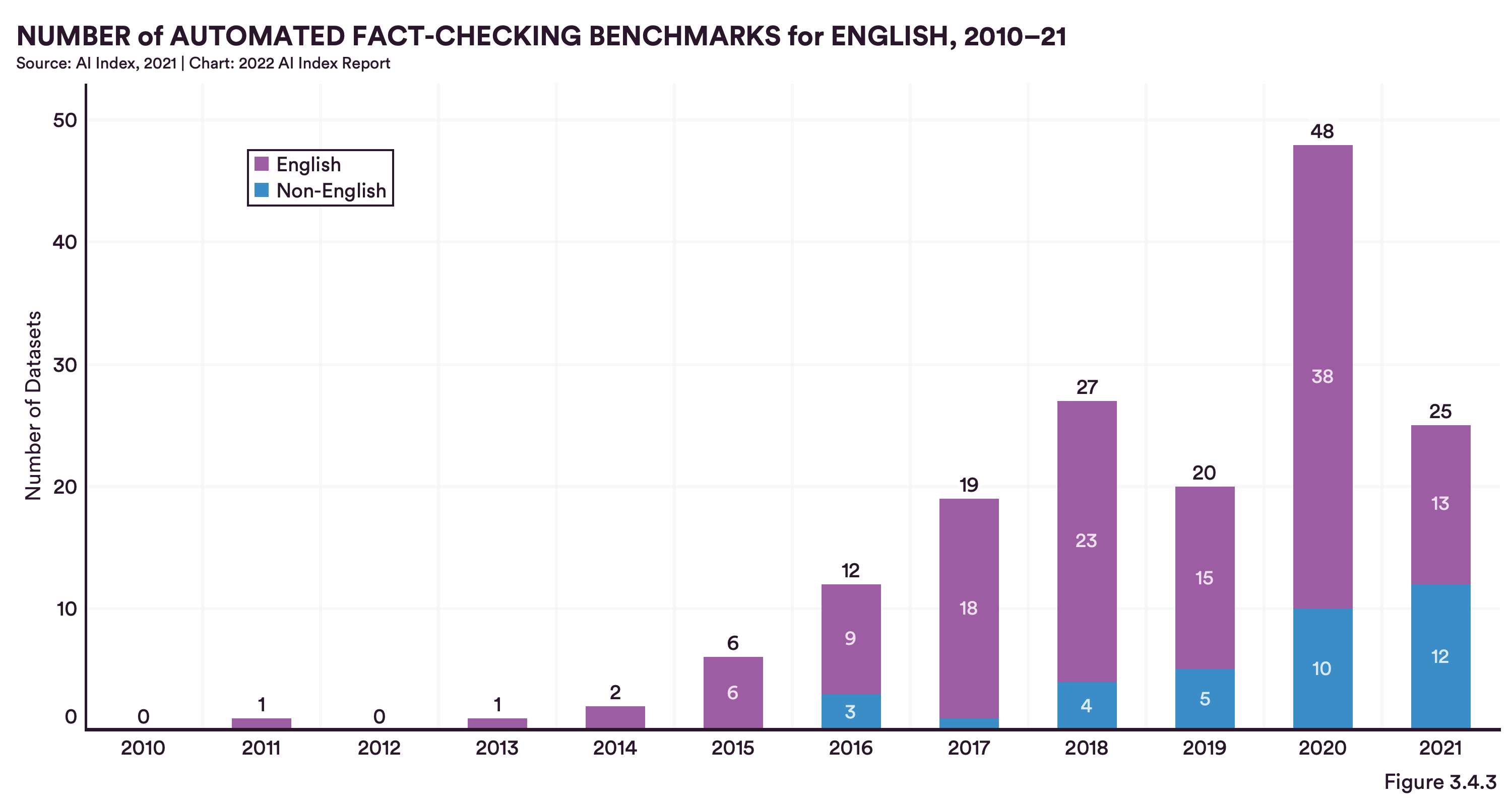
The growing use of AI in everyday life, across industries, and around the world generates numerous questions about how AI is shaping the economy and education—and, conversely, how the economy and education are adapting to AI. This chapter examines the economy and education, using data from Emsi Burning Glass, NetBase Quid, and LinkedIn to capture AI trends in the global economy and data from the annual Computing Research Association Taulbee Report to analyze trends in AI and computer science PhD graduates.

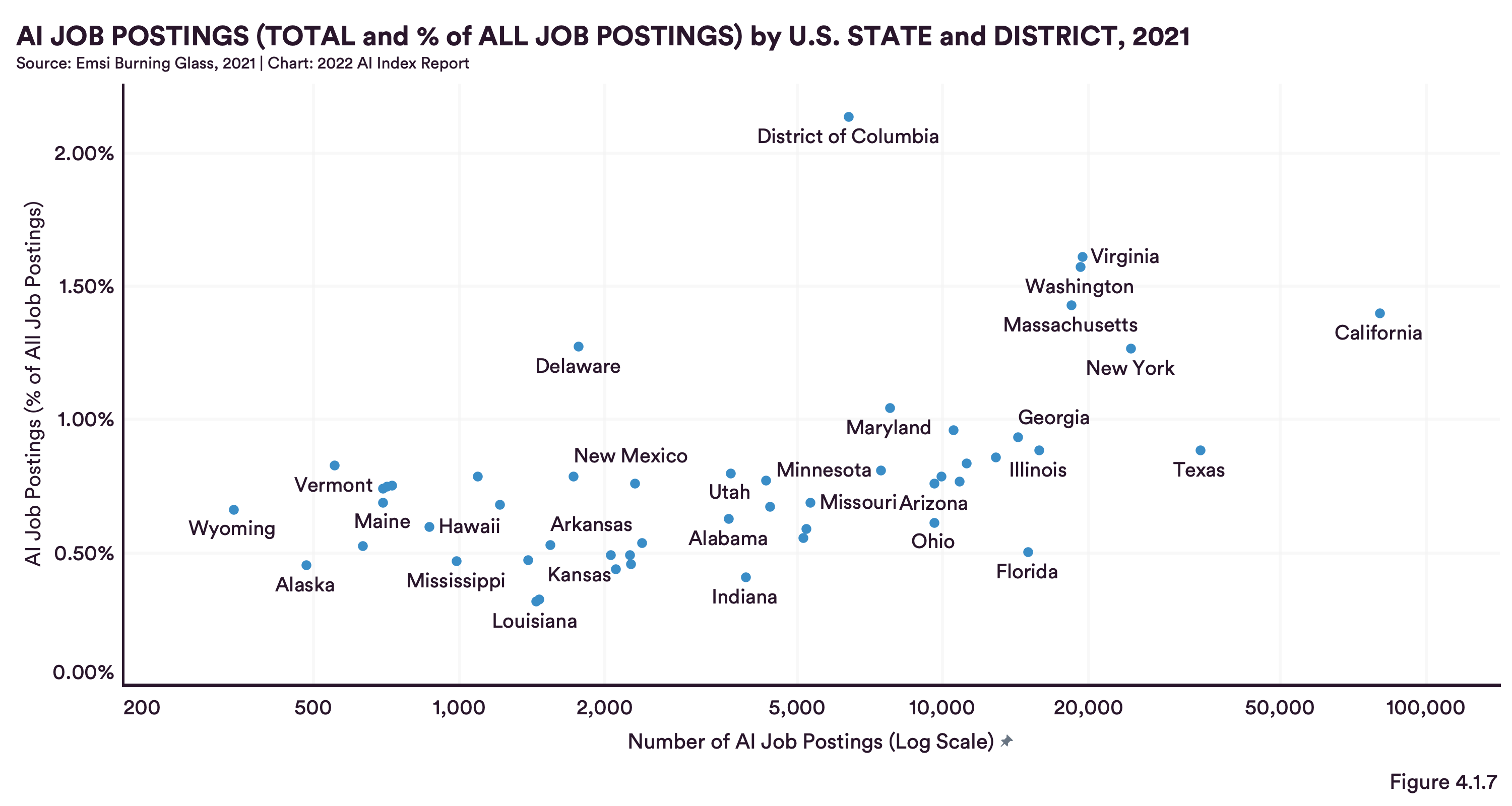
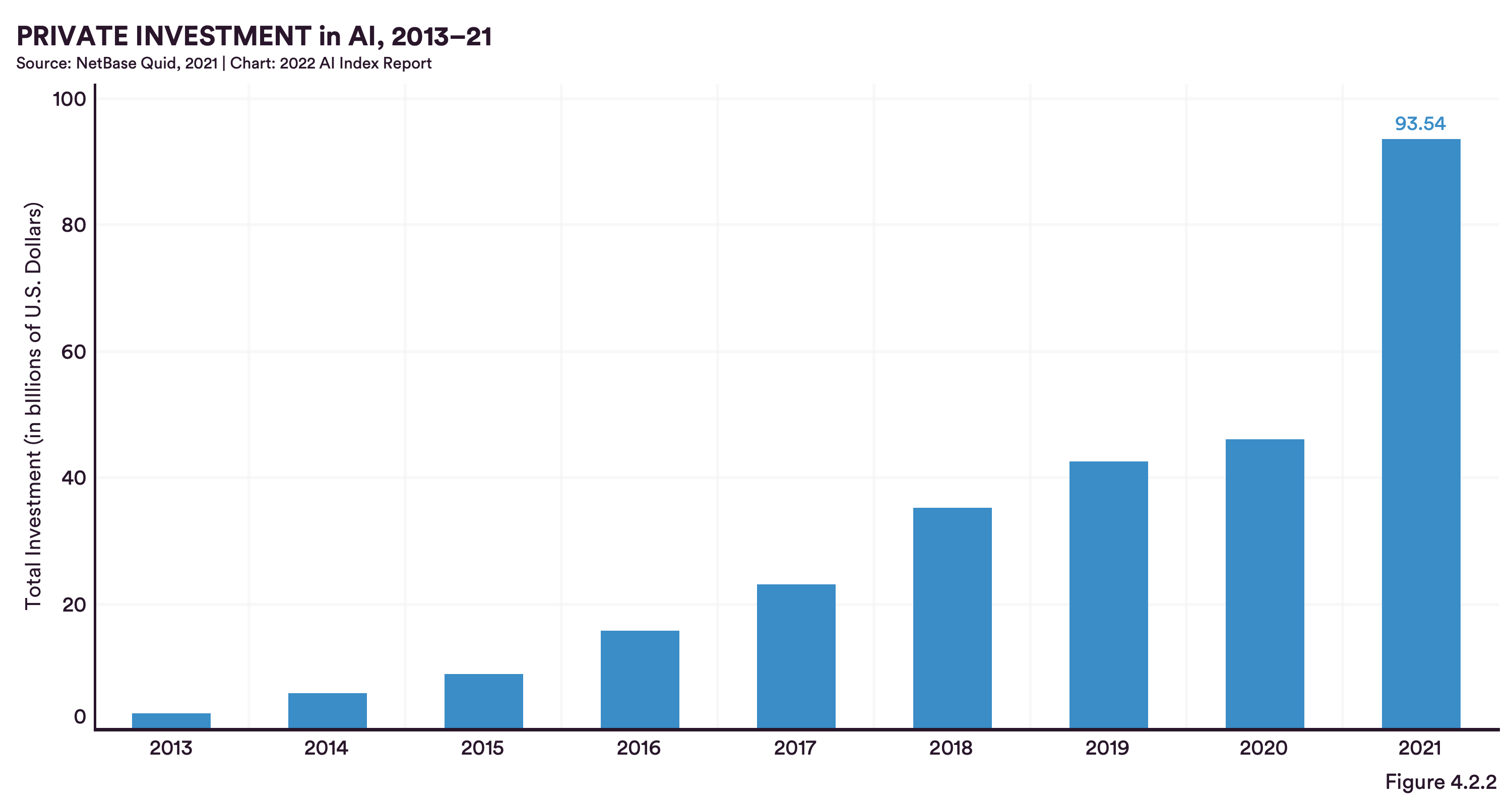
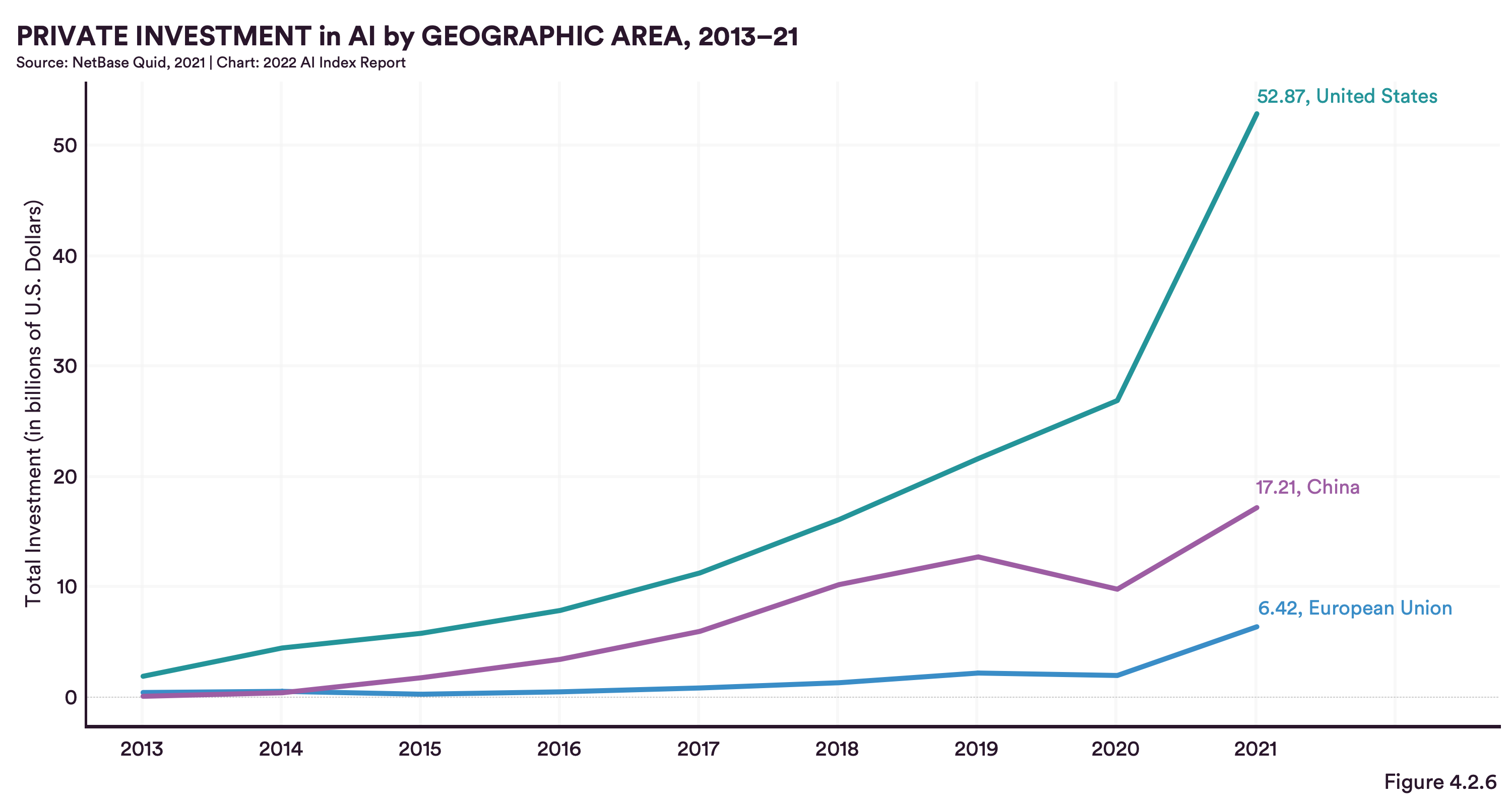


As AI has become an increasingly ubiquitous topic in the last decade, intergovernmental, national, and regional organizations have worked to develop policies and strategies around AI governance. These actors are driven by the understanding that it is imperative to find ways to address the ethical and societal concerns surrounding AI, while maximizing its benefits. Active and informed governance of AI technologies has become a priority for many governments around the world. This chapter examines the intersection of AI and governance, and takes a closer look at how governments in different countries, regions, and U.S. states are working to manage AI technologies.
